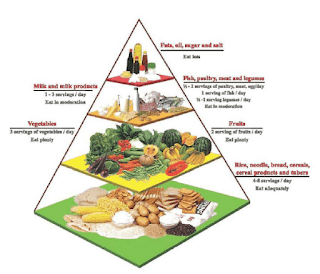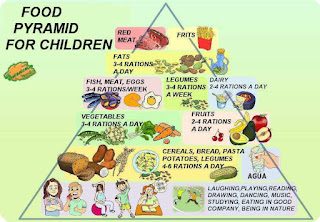Introduction:
The food pyramid for kids is a valuable educational tool that aims at instilling healthy eating habits among children. Understanding the dietary needs and requirements of children is crucial for their growth, development, and overall well-being. This essay employs a graduate-level approach to explore the intricate details of the food pyramid for kids, focusing on its significance, structure, and important food groups.
The Significance of the Food Pyramid for Kids
The food pyramid for kids serves as a guide to help children make informed choices about their dietary intake. By emphasizing specific food groups and serving sizes, the pyramid promotes a balanced diet, preventing deficiencies and ensuring optimal nutrition. It educates children about the importance of consuming a variety of foods for overall health, growth, and sustained energy levels.
Structure of the Food Pyramid for Kids
The food pyramid for kids is structured into key food groups, with each group representing a set of foods that offer similar nutritional benefits. The pyramid is composed of colorful sections that signify the recommended daily servings of different food groups. This hierarchical structure allows children to understand the importance of consuming certain foods more frequently than others.
Grains and Cereals
The largest section at the base of the food pyramid represents grains and cereals such as bread, rice, and pasta. These foods are rich in carbohydrates, which provide essential energy for children's daily activities. Emphasizing whole grains in this section encourages the consumption of fiber, thus promoting digestive health.
Fruits and Vegetables
The second-largest section of the food pyramid highlights the significance of consuming fruits and vegetables. These nutrient foods are packed with vitamins, minerals, fiber others. Encouraging children to eat a variety of colorful fruits and vegetables exposes them to a range of antioxidants, promoting their overall health and strengthening their immune system.
Dairy Products
section representing dairy products includes milk, yogurt, and cheese. These foods provide crucial calcium, vitamin D, and protein necessary for children's bone development and growth. Educating children about the importance of consuming low-fat or fat-free options promotes a healthy cardiovascular system.
Protein-Rich Foods
Protein-rich foods such as meat, fish, poultry, eggs, and nuts constitute another section of the food pyramid. These foods are essential for building and repairing body tissues, maintaining a healthy immune system, and ensuring proper growth. Educating children about lean protein choices fosters healthy eating habits and supports their overall development.
Fats, Oils, and Sweets
The smallest section of the food pyramid consists of fats, oils, and sweets. While these foods can be enjoyed in moderation, it is important to instruct children about the necessity of limiting their intake. A balanced diet focuses on healthier fats, such as those found in avocados and nuts, while minimizing the consumption of processed sweets and sugary beverages.
Portion Control and Daily Servings
The food pyramid for kids highlights the importance of portion control and serving sizes. By providing clear recommendations on the number of servings from each food group, children are taught to practice moderation, preventing overeating and the development of unhealthy eating habits.
Effectiveness and Impact of the Food Pyramid for Kids
Numerous studies have shown that the food pyramid for kids is an effective educational tool that positively influences their dietary choices. The pyramid promotes a balanced lifestyle, reducing the risk of obesity, diabetes, and other diet-related diseases. By instilling healthy eating habits during childhood, the food pyramid plays a crucial role in preventing future health issues.
Conclusion
In conclusion, the food pyramid for kids is a comprehensive educational tool designed to cultivate healthy dietary habits among children. Its structure, which emphasizes various food groups, encourages a balanced diet and equips children with the necessary knowledge to make informed food choices. By following the principles of the food pyramid, children can achieve optimal nutrition, promoting their growth, development, and overall well-being.







0 Comments